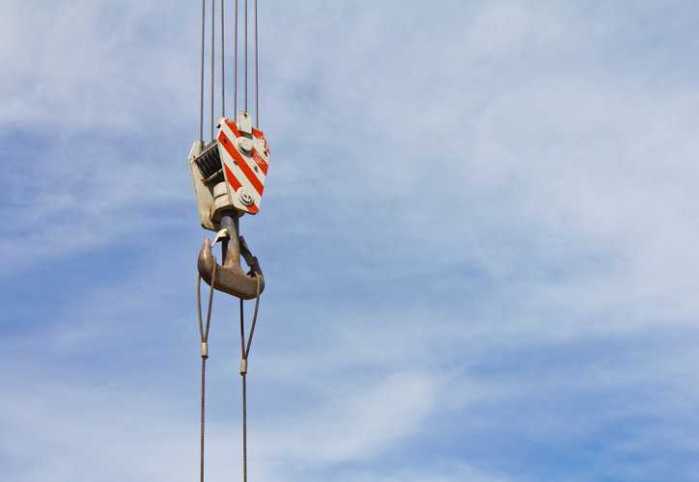The ASME BTH-1 standard for the design of below-the-hook lifting devices has been revised. The new edition, released as ASME BTH-1-2023: Design of Below-the-Hook Lifting Devices, updates and supersedes the 2020 version of the standard, continuing to serve as a guide for designers, manufacturers, purchasers, and users of below-the-hook lifting devices.
What are Below-the-Hook Lifting Devices?
Below-the-hook lifting devices, or devices used for attaching a load to a hoist, can contain components such as slings, hooks, and rigging hardware. They can be in the form of structural and mechanical lifting devices, vacuum lifting devices, operated close proximity lifting magnets, remotely operated lifting magnets, or scrap and material handling grapples.
While ASME B30.20-2021: Below-the-Hook Lifting Devices addresses most considerations related to below-the-hook lifting devices, there were, during the standard’s lifetime, formal requests for interpretation of the limited structural design criteria covered in the document. This birthed the ASME BTH-1 standard.
About ASME BTH-1-2023
ASME BTH-1-2023 provides minimum structural, mechanical design, and electrical component selection criteria for below-the-hook lifting devices, and it can assist compliance with ASME B30.20-2021, a document within the ASME B30 series that specifies the marking, construction, installation, inspection, testing, maintenance, and operation of these devices.
ASME BTH-1-2023 calls for lifting devices to be designed by, or under the direct supervision of, a qualified person. It covers provisions for specified rated loads, load geometry, Design Category, and Service Class, which users are to adhere to during the design of any below-the-hook device. In addition to design criteria, the standard addresses analysis methods for measuring allowable stresses, materials, welding designs and procedures, explanatory information (including units of measure), and other considerations.
It is important to realize that the provisions defined in ASME BTH-1-2023 address the most common and broadly applicable aspects of the design of below-the-hook lifting devices. Therefore, there may be design issues that are not explicitly covered in the standard. A qualified person is responsible for handling any specialized criteria.
Changes to ASME BTH-1-2023 from the 2020 Edition
Ever since its initial publication in 1999, ASME BTH-1 has undergone a periodic revision process, and each subsequent edition has possessed changes that improved upon the previous version. Some changes to ASME BTH-1-2023 include:
- The terms lifter and device were revised to lifting device throughout the standard.
- Definitions of bystander, fall zone, manual vacuum lifting device, mechanical vacuum lifting device, powered vacuum lifting device, precharged vacuum lifting device, safety-trained person, nonmandatory appendix and self-priming vacuum lifting device were added.
- Definitions of db (nominal diameter of threaded fastener, in. (mm)), n (threads per inch), and p (thread pitch, mm) were added.
- Former Section 4-2.6, “Sheave Design,” was revised into “Sheave Design for Wire Rope,” and a new Section 4-2.7, “Sheave Design for Synthetic Rope,” was added.
- New Table 4-10.2-1, “Intended Use Type Summary,” was added.
- Details for allowed computed stresses for hydraulic cylinders in Section 4-11.2, “Fluid Power Components,” was expanded.
Furthermore, there are numerous editorial changes present in the standard. To assist users, ASME BTH-1-2023 notes where changes have been made in the document through a margin note, (23).
Changes to ASME BTH-1-2020 from the 2017 Edition
The previous revision of the below-the-hook lifting devices design document was also significant. For any past users of this standard, we’ve included major changes made to ASME BTH-1-2020 below:
- Definition for load block was added.
- References were updated.
- Illustrations in Table 3-4.4-1, “Fatigue Design Parameters,” were revised.
- Specifications for equalizing sheaves were updated to accommodate for the option of pitch diameter as recommended by the rope manufacturer.
- Chapter 5 was retitled “Electrical Design” (this was titled “Electrical Components” in ASME BTH-1-2017).
- New section in Appendix A was added to clarify the role of ASME B30.20 in providing design criteria in relation to ASME BTH-1-2020 requirements.
- Information was added to Appendix C to note that allowable loads or allowable stresses, except for bearing stress, on connection elements express the design factor as 1.20Nd in static strength design equations in section 3-3, “Connection Design.”
ASME BTH-1-2017: Changes from the 2014 Edition
We’ve also included major changes made to ASME BTH-1-2017 below:
- Chapter 6: Magnet Lifting Design was added.
- An accompanying Nonmandatory Appendix with commentary for the new chapter was added.
- Definitions of applied load(s), dead load, load cycle, maximum stress, minimum stress, and rated load were added.
- Definitions of load cycle, applied load(s), dead load, rated load, rigging hardware, sling, maximum stress, and minimum stress were deleted.
- Terminology for equalizing sheave, running sheave, electrical power supply, electric motor, externally powered electromagnet, master switch were altered.
- Definitions of shall and should, as well as the location where design factor, back-driving, L10 bearing life, vacuum pad, brake, control system, rectifier, and sensor(s) are first used were revised.
- Units were added for: the distance from the edge of the pinhole to the edge of the plate in the direction of the applied load, the pin diameter, the shear plane locating angle for pinconnected plates, the effective area of the vacuum pad enclosed between the pad and the material when the pad is fully compressed against the material surface to be lifted, and the angle of vacuum pad interface surface measured from horizontal.
- Nomenclature for hc, hp, My, Sxc, and Sxt was added.
- Nomenclature for Fr, Fyf, and Fyw was deleted.
- Nomenclature for ni, Su, Sy, and Fu was revised.
- Design Category C Lifters were added.
